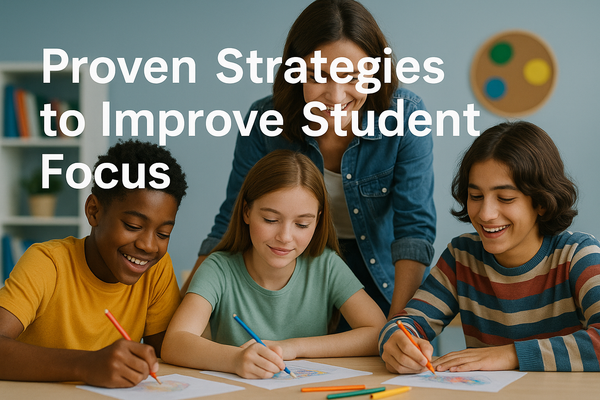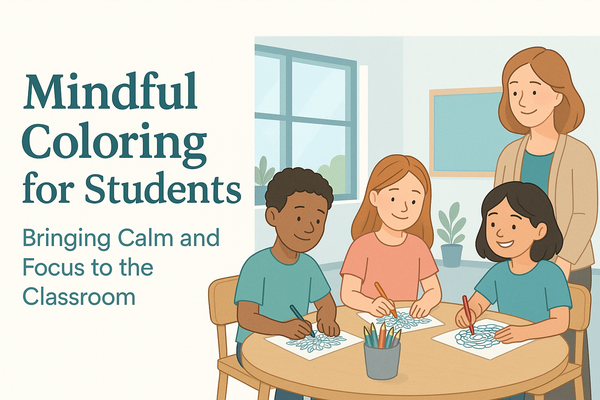Engaging Activities to Enhance Number Recognition Skills

Number recognition is a fundamental skill that lays the groundwork for a student’s mathematical journey. Before they can confidently count, add, or subtract, they need to understand what numbers look like and what they represent.
Learning numbers does not have to be dull or repetitive; by incorporating creative, hands-on activities, teachers can make the process both fun and effective. In this guide, we will explore 10 engaging ways to teach number recognition, turning learning into an exciting experience for young learners.
What Is Number Recognition?
Number recognition is the ability to identify and understand numbers by their visual appearance, name, and associated quantity. It is a crucial early maths skill that allows students to differentiate between numerals, associate them with their spoken names, and eventually connect them to real-world quantities.
Mastering number recognition involves more than just memorising digits, it requires practice in reading, writing, and linking numbers to objects or groups. This foundational skill paves the way for essential mathematical concepts such as counting, addition, and subtraction. While it takes time and repetition, engaging and interactive activities can make the process enjoyable.
Key Skills Involved in Number Recognition
Number recognition is more than just identifying digits; it involves several interconnected skills that help students build a strong mathematical foundation. Here are the core components of number recognition:
Understanding Quantity: Students learn that groups of objects can be counted and that each group corresponds to a specific number. This helps them grasp the concept of quantity and its relationship with numerals.
Recognising Number Names: Associating spoken words with numbers (one, two, three, etc.) is an essential step in number recognition. This skill allows students to verbalise numbers and connect them to their written forms.
Identifying Numerical Digits: Recognising numbers in their written form (1, 2, 3, etc.) enables children to differentiate between digits and understand their individual values.
Writing Numbers: The ability to write numbers by hand reinforces number recognition and helps develop fine motor skills, making it easier for students to engage in early maths activities.
By developing these skills through engaging activities and consistent practice, students can build confidence in their number recognition abilities, setting the stage for more advanced mathematical learning.
Why Is Number Recognition Important?
Before students can progress to basic arithmetic, they need a solid grasp of number recognition. This skill goes beyond simply reciting numbers from memory; it involves truly understanding what numbers represent and how they function in everyday life. Here is why number recognition is essential for early learning.
Building a Strong Mathematical Foundation
Recognising numbers allows students to make sense of counting, patterns, and relationships between quantities, all of which are key to later mathematical success.
Understanding One-to-One Correspondence
Number recognition helps students connect numerals to actual quantities. For example, when they see the number 5, they understand that it represents a group of five objects rather than just a symbol.
Reading and Writing Numbers
Recognising and writing numbers correctly prepares students for solving equations and engaging in more advanced maths concepts as they grow.
Everyday Application
Numbers are everywhere, from telling the time to counting money and measuring ingredients. Developing number recognition skills equips students with practical knowledge they will use throughout their lives.
10 Engaging Activities to Teach Number Recognition
Developing number recognition skills requires consistent practice and engaging activities that make learning fun. Here are ten interactive and creative ways to help students recognise numbers while keeping them entertained.
1. Number Hunt
A number hunt is a fantastic way to encourage students to spot numbers in their environment. Take them on a walk around the classroom, home, or playground, and ask them to find numbers on doors, clocks, books, and signs.
You can make it more exciting by giving them a checklist with specific numbers to find. Another variation of this activity is to hide number cards around a room and let students search for them like a treasure hunt.
Once they find a number, ask them to say it out loud and match it to a corresponding number of objects. This hands-on approach helps students connect numerical symbols with real-world contexts, reinforcing recognition skills in a fun and engaging way.
2. Number Tracing with Sensory Materials
Using sensory materials to trace numbers enhances students’ fine motor skills while reinforcing number recognition. Fill a shallow tray with sand, flour, or salt, and have children trace numbers using their fingers.
You can also use shaving cream spread on a table, where students can ‘write’ numbers with their hands. This multi-sensory approach makes learning more memorable, as it engages touch, sight, and movement.
To extend the activity, encourage them to say the number aloud while tracing, reinforcing verbal and visual recognition simultaneously. Gradually, you can introduce number cards for them to copy, helping them become familiar with both number formation and recognition in a stress-free manner.
3. Playdough Number Moulding
Playdough is a great tool for hands-on learning, and it can be used to form numbers in a fun and interactive way. Give students number flashcards and ask them to roll playdough into long strips to shape each numeral.
This activity strengthens their hand muscles while improving their ability to distinguish different number shapes. You can also encourage them to press small objects like beads or buttons into the play dough to match the corresponding quantity, reinforcing the connection between numbers and their values.
Additionally, making playdough numbers provides a great opportunity for open-ended creativity; students can decorate their numbers with different colours or textures, making learning even more exciting.
4. Number Sorting Baskets
For this activity, prepare several small baskets and label each with a number (e.g., 1, 2, 3). Provide students with a mix of small objects such as blocks, toy animals, or pom-poms. Their task is to place the correct number of objects into each basket based on the label.
This hands-on activity helps students not only recognise numbers but also understand their values in a practical way. To make it more interactive, use different themes, such as sorting toy cars into numbered garages or placing toy animals into numbered farm pens. Gradually increase the numbers used to keep students challenged and engaged.
5. Hopscotch with Numbers
Hopscotch is a classic playground game that can be easily adapted for number recognition. Draw a hopscotch grid on the floor using chalk (outdoors) or tape (indoors), and write numbers in each square.
As children jump from one square to another, encourage them to say the number aloud. You can also call out numbers randomly and have them jump to the correct square. This activity combines physical movement with learning, helping students reinforce number recognition through active play.
To add variety, you can introduce simple math challenges, such as asking students to jump to the square that comes before or after a given number. This is also a great game to add to your indoor recess game ideas.
6. Number Puzzles
Number puzzles are a great way to enhance recognition and problem-solving skills. You can create a simple puzzle by cutting out large printed numbers and having students piece them together like a jigsaw.
Alternatively, use store-bought number puzzles where students match numerals with corresponding images (e.g., matching the number 4 with a picture of four apples). This activity encourages hands-on interaction with numbers, making learning more engaging.
You can also add an extra challenge by mixing in letters or symbols, prompting students to sort out the numbers from non-numerical elements.
7. DIY Number Flashcards
Creating personalised number flashcards allows students to engage with numbers in a more meaningful way. Provide blank cards and ask students to decorate them with drawings or stickers that match each numeral.
For example, a card with the number 3 could feature three stars, three dots, or three toy images. Once the flashcards are complete, use them in various games such as number matching, sequencing, or memory games. Personalising their learning materials makes students more invested in the activity.
8. Counting with Everyday Objects
One of the simplest yet most effective ways to reinforce number recognition is through everyday counting. Encourage students to count everyday objects such as spoons, socks, buttons, or fruit while saying the corresponding numbers.
You can turn it into a game by setting up a “number challenge” where students have to find and count a specific number of items. This method helps them understand that numbers are not just symbols but represent real quantities, making the learning process more practical and relatable.
9. Number Fishing Game
Transform number learning into an exciting fishing game by attaching numbers to small paper fish and placing them in a shallow container or on the floor. Give students a toy fishing rod (or a homemade one with a magnet or hook), and let them ‘catch’ a number.
Each time they catch a fish, they must identify the number and, if possible, match it to a corresponding quantity. This activity is engaging, encourages hand-eye coordination, and keeps children excited about learning.
You can also make the game more interactive by adding challenges, such as catching numbers in the correct sequence or pairing odd and even numbers together.
10. Singing Number Songs
Music and rhythm are powerful tools for memory retention. Singing number songs, such as “One, Two, Buckle My Shoe” or “Five Little Ducks,” helps students memorise numbers in a fun and engaging way.
You can incorporate hand gestures, clapping, or props to reinforce number recognition while making the experience more interactive. Consider creating your own number songs by setting simple tunes to counting sequences or incorporating numbers into familiar nursery rhymes.
The repetition and melody help students internalise number sequences and recognise numbers naturally through play. You can use this activity by pairing students in groups and using it as a team-building activity.
Effective Strategies for Teaching Number Recognition
Teaching number recognition to young students is an exciting journey that sets the stage for their mathematical development. By using engaging, hands-on methods, teachers can help students grasp numbers in a meaningful way. Here are some effective strategies to make learning fun and interactive.
1. Start with Small Number Sets (0-5)
The best place to begin is with the numbers 0 to 5, as children naturally interact with these quantities in daily life: five fingers on a hand and five toes on a foot. It is also essential to introduce zero early on, as it plays a critical role in mathematical concepts but is often overlooked. Once students feel comfortable with these numbers, gradually expand to larger ones.
2. Explore Numbers in Everyday Life
Numbers are all around us, making daily life the perfect classroom. Encourage students to notice and identify numerals on clocks, doors, price tags, and bus signs. By making real-world connections, they will see that numbers are not just symbols in a book but an essential part of their surroundings.
3. Investigate Number Shapes
Help children become familiar with how numbers look by examining their shapes. Ask questions like, “Does this number have straight or curved lines?” or “What happens if we turn it upside down?” Tracing numbers with their fingers, drawing them in sand, or using sensory materials like playdough can make this exploration more engaging.
4. Recognise Numbers Independently
While counting in sequence is helpful, it is equally important that students recognise numbers on their own. Present numbers in different contexts: on flashcards, in books, or as part of matching games to ensure they can confidently identify each numeral without relying on its order in a sequence.
5. Use Hands-On Visual Aids and Manipulatives
Tactile learning tools like number magnets, counting beads, flashcards, and building blocks make learning interactive and engaging. Encourage students to explore these tools through play, allowing them to build patterns, match numbers to objects, or simply arrange them in creative ways.
6. Introduce Number Writing Step by Step
Once students can identify numbers visually, guide them in writing them. Start by having them trace numbers with their fingers, then progress to using crayons, pencils, or chalk. Reinforce the idea that numbers, like letters, are made up of lines and curves. Matching written numerals to objects can further solidify their understanding.
Building Number Sense
Developing number sense goes beyond just recognizing numbers; it helps students understand how numbers relate to each other and how they function in everyday life. Three essential skills in building number sense are counting, comparing, and sequencing. Mastering these skills allows students to develop confidence in working with numbers and prepares them for more advanced mathematical concepts.
Counting: Connecting Numbers to Quantities
Counting is the first step in building number sense, but it is more than just reciting numbers in order. Students need to understand that each number represents a specific quantity. Encourage meaningful counting by using real-world objects like toys, snacks, or fingers rather than just memorizing numbers.
A great way to reinforce counting is through one-to-one correspondence, where students match each number to a specific object. For example, when counting five apples, they should touch each apple while saying the numbers aloud. This helps them see the relationship between numbers and physical quantities.
Comparing: Understanding More, Less, and Equal
Comparing numbers helps students develop a sense of numerical value. They should be able to determine which group has more or fewer items and which numbers are greater or smaller. This skill lays the foundation for basic addition and subtraction.
A practical way to teach comparing is by using real-life examples. Ask questions like, “Who has more blocks?” or “Do we have more apples or oranges?” You can also introduce simple activities like grouping objects into two sets and asking children to identify which set is bigger or smaller. Visual aids, such as number lines or ten frames, can further support understanding.
Sequencing: Recognizing Number Order
Sequencing is the ability to understand the order of numbers and recognize patterns. This helps students grasp concepts like before, after, and between, which are essential for understanding number relationships.
To teach sequencing, use number puzzles, flashcards, and interactive activities where students arrange numbers in the correct order. Asking questions like, “What number comes after 4?” or “What number is missing in this sequence: 1, 2, __, 4?” can strengthen their ability to recognize number patterns. Skip counting (counting by 2s, 5s, or 10s) is another effective way to build sequencing skills while preparing children for multiplication.
As a teacher, you can use AI tools like teacherbot.io to create personalised resources for your students and spend more time engaging with your students.
Conclusion
Number recognition is the foundation of early maths, setting the stage for counting, comparing, and problem-solving. By using engaging activities and hands-on learning, students can develop strong number sense, making math more intuitive and enjoyable. With patience, practice, and creativity, teachers can help young learners build confidence in their numerical skills.




